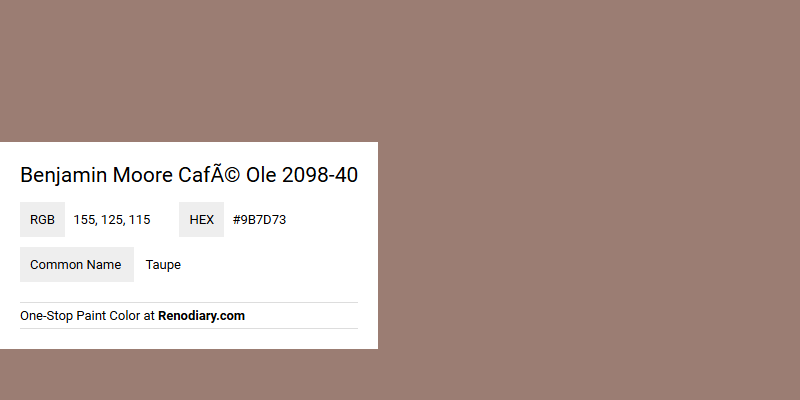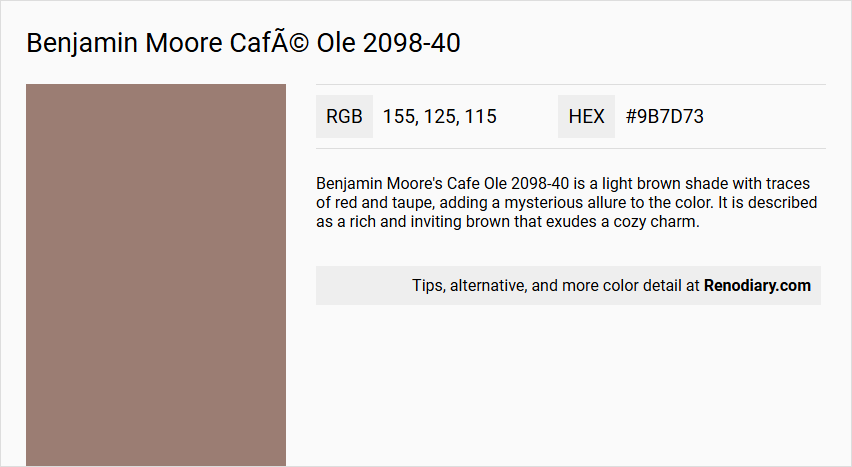
Benjamin Moore's Café Ole 2098-40 is a sophisticated shade that embodies a rich taupe hue, offering a warm and inviting ambiance to any space. Its balanced blend of earthy reds and subdued grays in its RGB composition of 155, 125, 115 makes it an ideal choice for creating a cozy, modern aesthetic. This versatile color seamlessly complements a variety of design elements, enhancing both contemporary and traditional interiors with its understated elegance.
Color Description
Benjamin Moore's Cafe Ole 2098-40 is a light brown shade with traces of red and taupe, adding a mysterious allure to the color. It is described as a rich and inviting brown that exudes a cozy charm.
Undertones
The undertone of Cafe Ole 2098-40 can be accurately described as a red hue. This red undertone is evident when isolating the pure hue and eliminating any tints, tones, and shades.
Color Values
- HEX Value: #9B7D73
- RGB Code: 155, 125, 115
- LRV (Light Reflectance Value): 23.78
Usage
Cafe Ole 2098-40 is suitable for various rooms such as living rooms, libraries, and bedrooms. It can be used as an accent wall or as an all-over color and pairs well with neutrals and natural materials for a timeless and refined look.
Atmosphere
This color adds a touch of elegance and comfort to any space, creating a welcoming ambiance. It is ideal for creating a cozy and sophisticated atmosphere, making it perfect for spaces where warmth and comfort are desired.
Benjamin Moore Café Ole 2098-40 Color Alternative
Benjamin Moore Café Ole 2098-40 offers a timeless, earthy foundation that evokes a sense of warmth and understated elegance in any space. Tikkurila Stonehenge V477, Tikkurila Etruscan S471, and Behr Dry Brown N230-5 are exceptional alternatives that maintain the color’s rich character while offering subtle shifts in tone and depth. Each alternative provides a unique perspective on the classic appeal of Benjamin Moore Café Ole 2098-40, enabling designers to tailor the ambiance with precision and style.
Bathroom

For a bathroom, Benjamin Moore's Cafe Ole 2098-40 offers an excellent option, enhanced by a formulation designed to excel in high-traffic, humid environments. This paint delivers superior durability, resists fading and color rub-off, and maintains its finish even in areas like kitchens where cleanliness is paramount.
Selecting a pearl or satin finish is ideal for maintaining a smooth, less porous surface that withstands frequent cleaning. Additionally, accurately estimating paint needs by calculating wall area—accounting for the space taken by doors—and dividing by typical coverage ensures an efficient, well-planned application.
Bedroom
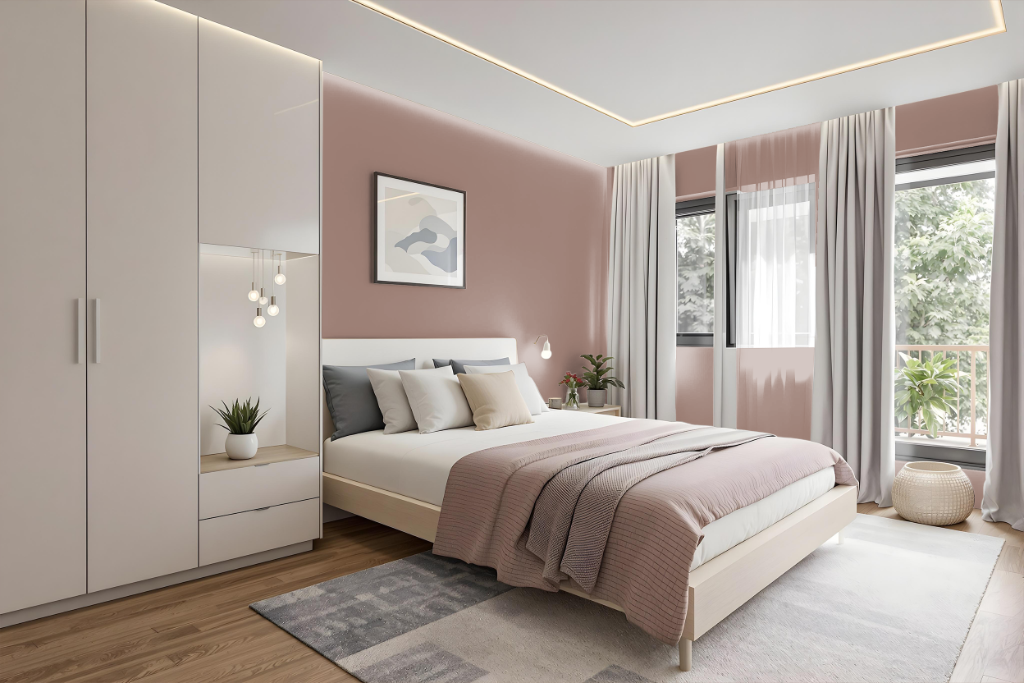
Benjamin Moore's Cafe Ole creates a warm and inviting atmosphere in a bedroom, lending a cozy backdrop that enhances the intimate feel of the space while adding depth and subtle mystery. Its light-absorbing quality makes the room feel snug and enveloping, perfect for a serene retreat.
For a harmonious look, this color works well when paired with complementary shades such as Steam, Atrium White, London Fog, and Blue Note, or with similarly toned options like Santa Fe Tan, Dusty Ranch Brown, Autumn Brown, and Cougar Brown. Each of these choices helps to accentuate the unique ambiance of the room, allowing for a stylish blend of warmth and understated elegance.
Kitchen
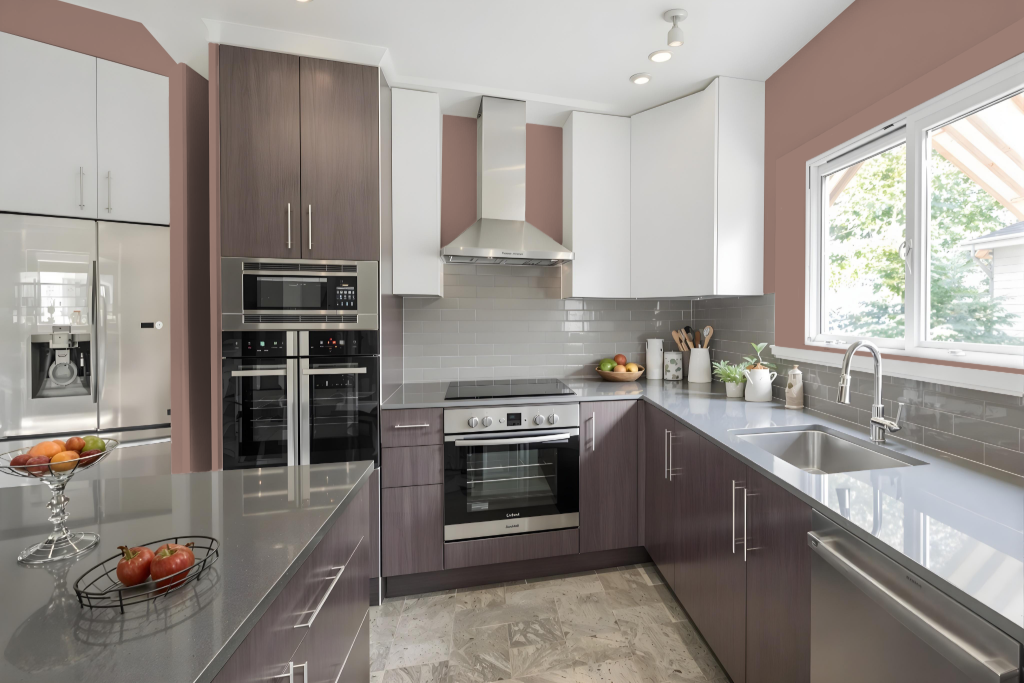
In a kitchen, Benjamin Moore's Cafe Ole 2098-40 creates a warm and inviting atmosphere while adding elegance to the space. This color enhances the overall design by pairing seamlessly with neutrals and natural materials to establish a timeless and refined aesthetic.
To further enrich the look, consider complementing Cafe Ole with shades such as Atrium White or London Fog for a balanced design. Additionally, incorporating earthy tones like Santa Fe Tan, Dusty Ranch Brown, and Autumn Brown helps create a cohesive and harmonious environment that radiates both comfort and style.
Living Room
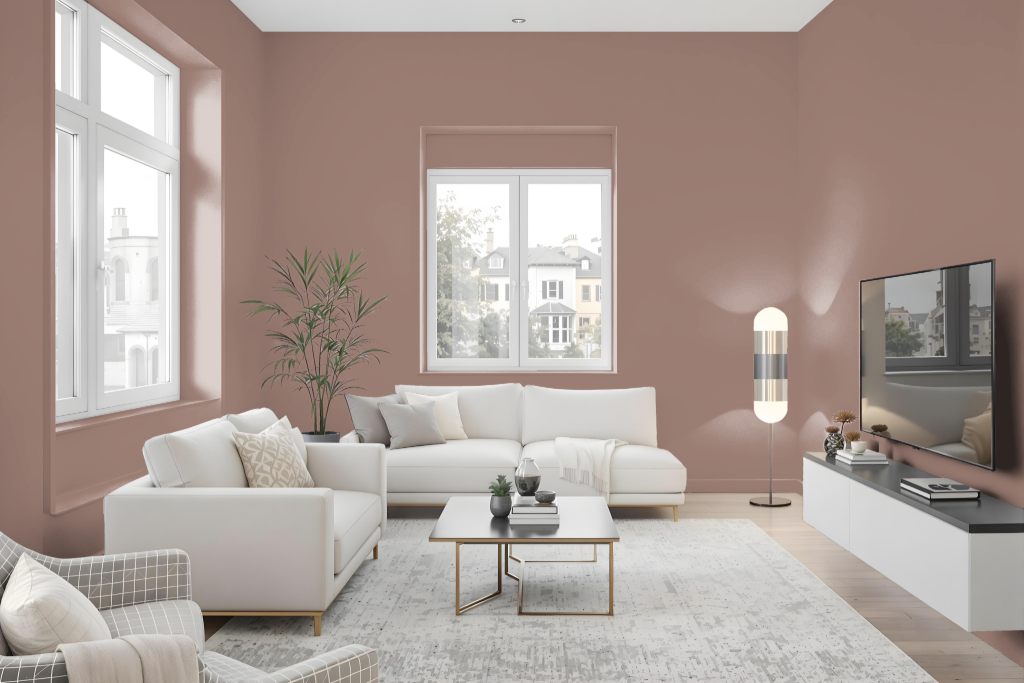
Benjamin Moore's Cafe Ole 2098-40 is a superb living room color that infuses spaces with a warm, welcoming, and cozy ambiance. It harmoniously pairs with neutrals and natural materials, creating an enduring and refined atmosphere that enhances both accent features and entire walls.
The color works beautifully with complementary shades such as Santa Fe Tan, Dusty Ranch Brown, Autumn Brown, and Cougar Brown, while touches of greener tones like Aegean Teal and Blue Lace introduce an engaging visual contrast for a refreshing, dynamic effect.
Outdoor
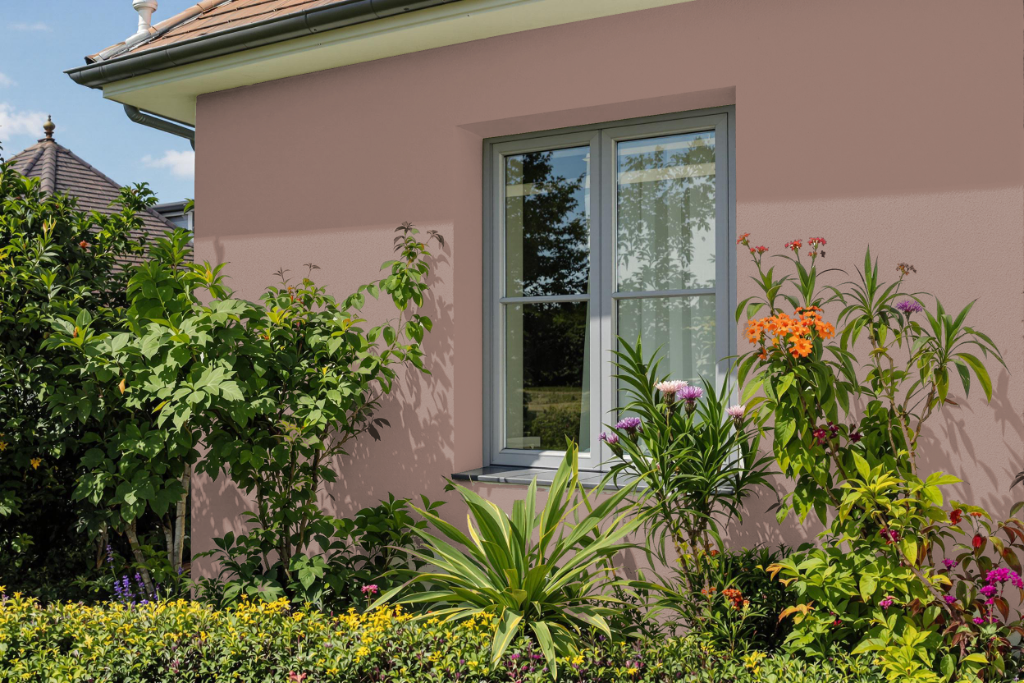
For home outdoor color, Benjamin Moore's Cafe Ole offers an inviting tone that many homeowners appreciate for its warm character. However, this color is part of an interior paint collection specifically designed as an acrylic blended latex flat coating, meaning it does not meet the rigorous demands of exterior applications.
Its formulation lacks the enhanced durability and weather-resistant properties needed for outdoor surfaces, such as adequate film thickness and stain resistance against harsh conditions. For projects beyond interior walls, it is advisable to choose products engineered for external exposure to ensure lasting performance and protection against fading and damage.
